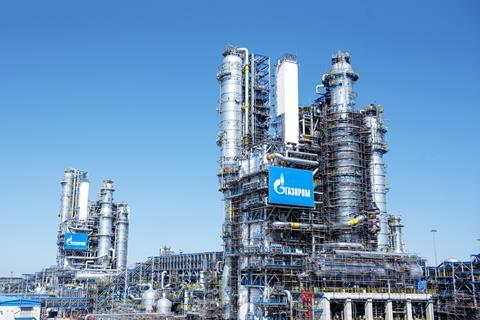


When helium markets tightened up during the second half of 2021 due primarily to a four month maintenance outage of the US Bureau of Land Management’s (BLM) crude helium enrichment unit, the industry consensus was that Gazprom’s Amur project would begin pumping large quantities of helium into the market by the fourth quarter (Q4) of 2022, averting another extended period of short supply.
However, after briefly producing helium for a few weeks in September, the Amur helium plant in Russia was taken down to complete construction punch-list items. While Amur was shut down, the natural gas processing plants that produce feed gas for the first of three helium plants experienced a fire on 8th October and a second explosion/fire on 5th January that will delay Amur’s helium production until at least Q3 of 2022. How long it will take to restart helium production from Amur remains to be seen, with speculation ranging from the most optimistic late Q3 to more pessimistic predictions that Amur will produce little, if any, helium before 2023.
With the BLM down again for unplanned maintenance in January for what seems likely to be several months, and expectations for reduced production from Qatar during February and March due to planned maintenance, several of the helium majors have declared Force Majeure and are now allocating supply to their customers. With no real relief in sight until Amur production ramps up and the prospect of another lengthy period of short supply, the global helium business finds itself in the midst of Helium Shortage 4.0.
While the BLM should eventually resume normal operations and Qatar production will return to normal after maintenance work is completed, helium supply will likely be insufficient to meet demand until Amur begins to contribute a material amount of new supply to the market. This implies that 2022 will probably experience supply shortages throughout the year, with market conditions in 2023 dependent on how quickly Amur is able to start-up and ramp up production. If production from two of Amur’s three 700 MMCF/year helium plants approaches full capacity at some point in 2023, it would be reasonable to assume that Helium Shortage 4.0 will end at some point in 2023 and helium supply should be ample by 2024.
Looking in the rear-view mirror, Helium Shortage 4.0 dates back to 1st July, 2021, when the BLM’s 4 month outage began. Since Helium Shortage 4.0 will likely continue through 2022 and, possibly, into 2023, it will probably have a total duration of 18-24 months. Similar to previous helium shortages 2.0 and 3.0, Helium Shortage 4.0 can be blamed on declining or unreliable production from existing sources (most notably the BLM) and the delay of new sources such as Amur entering the market, rather than growth in demand. In fact, due to demand destruction caused by recurring shortages and higher prices, helium demand has not experienced net growth over the last ten years.
The helium market in 2022 is going to look very different than most knowledgeable observers (including me) would have predicted little over one month ago and, once again, helium markets have demonstrated how volatile and unpredictable they can be.